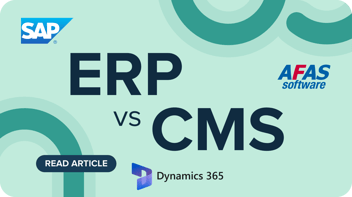Why ESG & contract management go together like peanut butter and jelly (palm oil-free, of course)
In the previous 3 blog posts, we built up the context around ESG and the value chain. But how does that connect to contract management?

How does contract management contribute to comply with ESG regulations?
Firstly, contracts are a critical element in any relationship between two or more parties. They’re the crucial connection between your company and your value chain. The value chain is linked together through a chain of contracts. They lay the foundation for the mutual expectations between the different signing parties. If you want to influence your value chain, you can of course have informal, non-binding conversations with companies in your value chain. But that’s not enough to drive substantial positive progress, and definitely not to stay compliant with ESG regulations. Expectations towards your value chain need to be cemented into contracts.
That’s where a structured contract management system comes in. I can’t define it as well as it’s been done before, so I’ll just highlight the key benefit here: “Having an effective contract management process in place ensures that contracts are properly managed throughout their lifecycle.” This lifecycle contains steps such as drafting, negotiating, approving, signing, complying, renewing, changing, etc.
Bringing these ESG-related expectations into your contracts requires adding new clauses or changing existing clauses. This is fairly easy to do for new contracts. You just change the main template of your MSA (Master Service Agreement) and underlying contracts. This is now the new template to be used for all new partnerships.
For existing contracts, however, this is a substantial project. Companies usually have hundreds (if not thousands) of contracts. Even if you implement the ESG-related clauses in phases (e.g. upon renewal), you’ll still need a strong structure to keep track of this entire (usually multi-year) roll-out. Especially because the implementation of ESG-related clauses in contracts is just step 1.
What are all the relevant steps in the entire ESG clause implementation process?
- Clauses: Define the ESG-related topics you find relevant to take up with your value chain partners and translate them into contract clauses
- Do you want your partners to comply with certain behaviours?
- Do you need your partners to share certain data with you (e.g. carbon emission data)?
- Which clauses are non-negotiable, and which are open for negotiations?
- Roll-out: Determine how you will approach the roll-out of these contract changes.
- Upon contract renewal, as soon as possible, or a hybrid method (e.g. ASAP for critical partners, upon renewal for less important partners)?
- All partners, critical partners only, or a phased approach?
- How will this evolve in the future?
- Consequences: Decide what the consequence management will look like.
- How will you score the ESG performance of your partners (based on questionnaires, EcoVadis, CDP, …)?
- What are the thresholds for acceptable behaviour?
- What are the consequences of not reaching that threshold, and how will that evolve over time (e.g. collaboration to improve, price pressure, termination of the collaboration, …)?
- Engagement: Follow up your partners’ compliance with these ESG clauses
- Receive regular data updates
- Monitor compliance through audits or sanity checks (e.g. via questionnaires)
- Embed compliance with ESG clauses in recurring partnership conversations
- Execute consequence management
I’m sure now you’re starting to see why you need to approach this in a structured way, through a well-thought-out contract management system. Doing this for one partner isn’t an easy feat, let alone doing it for hundreds of partners. With differing criticality to your business. In different phases. Different negotiation processes. Over multiple years.
To summarize: You can’t be compliant with ESG regulations or drive positive progress without involving your value chain. You can’t involve your value chain without contracts. You can’t change your contracts without a contract management system.
If this seems like a huge challenge, there’s only one solution. Start. A journey of a thousand miles begins with a single step (to quote Laozi). So start small, but start somewhere. And start deliberately. Fine-tuning your system and process along the way. You’ll be astonished at what you can accomplish in a year, let alone five.
Want to know all about ESG & Contract Management?
Watch Hans van Dam's expert session on Contract Management Day 2024 ⬇️




